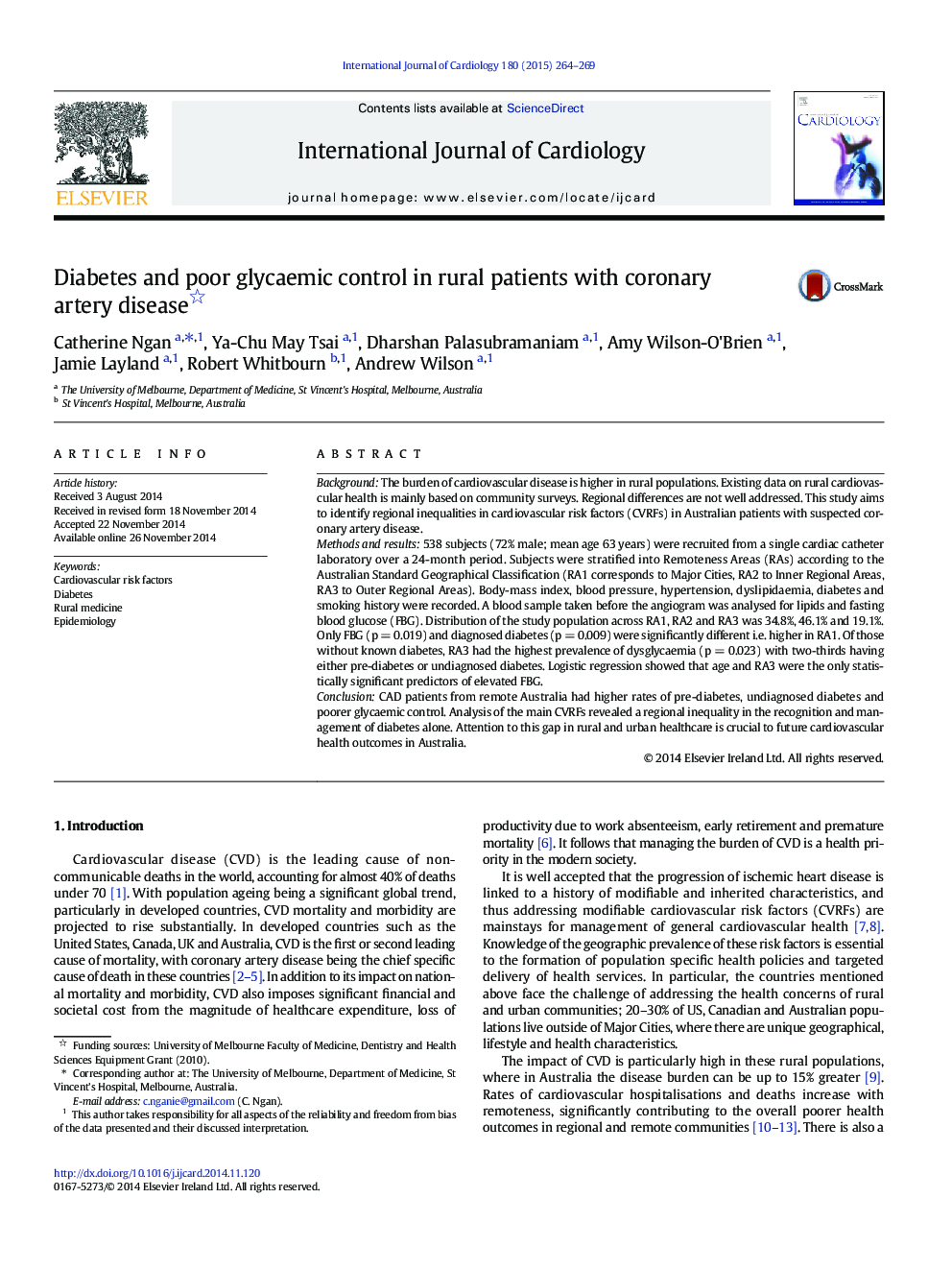| Article ID | Journal | Published Year | Pages | File Type |
|---|---|---|---|---|
| 5968770 | International Journal of Cardiology | 2015 | 6 Pages |
â¢We examine regional inequalities of risk factors in coronary angiogram patients.â¢There is an isolated regional inequality in diabetes and glycaemic control.â¢In rural patients without a diagnosis of diabetes, two-thirds had elevated fasting sugars.â¢Our findings point to a role for diabetic screening when presenting for a coronary angiogram.
BackgroundThe burden of cardiovascular disease is higher in rural populations. Existing data on rural cardiovascular health is mainly based on community surveys. Regional differences are not well addressed. This study aims to identify regional inequalities in cardiovascular risk factors (CVRFs) in Australian patients with suspected coronary artery disease.Methods and results538 subjects (72% male; mean age 63 years) were recruited from a single cardiac catheter laboratory over a 24-month period. Subjects were stratified into Remoteness Areas (RAs) according to the Australian Standard Geographical Classification (RA1 corresponds to Major Cities, RA2 to Inner Regional Areas, RA3 to Outer Regional Areas). Body-mass index, blood pressure, hypertension, dyslipidaemia, diabetes and smoking history were recorded. A blood sample taken before the angiogram was analysed for lipids and fasting blood glucose (FBG). Distribution of the study population across RA1, RA2 and RA3 was 34.8%, 46.1% and 19.1%. Only FBG (p = 0.019) and diagnosed diabetes (p = 0.009) were significantly different i.e. higher in RA1. Of those without known diabetes, RA3 had the highest prevalence of dysglycaemia (p = 0.023) with two-thirds having either pre-diabetes or undiagnosed diabetes. Logistic regression showed that age and RA3 were the only statistically significant predictors of elevated FBG.ConclusionCAD patients from remote Australia had higher rates of pre-diabetes, undiagnosed diabetes and poorer glycaemic control. Analysis of the main CVRFs revealed a regional inequality in the recognition and management of diabetes alone. Attention to this gap in rural and urban healthcare is crucial to future cardiovascular health outcomes in Australia.
